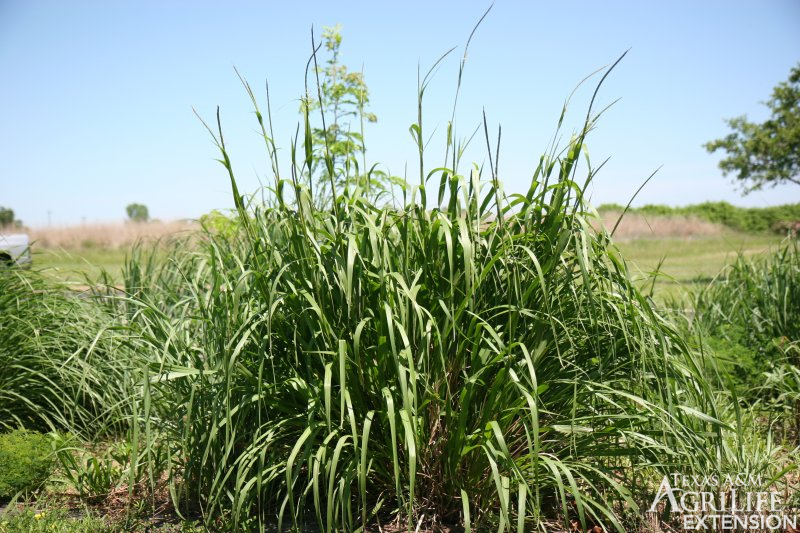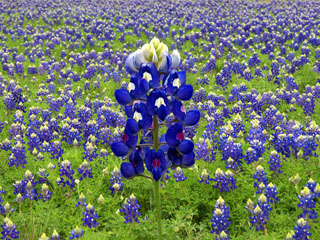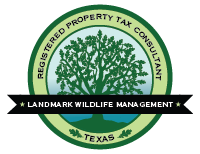When it comes to land management, the flashy species tend to get all the attention: your showy wildflowers, your bobwhite-friendly brush. But in the understory, quietly doing the work, is a plant that deserves the spotlight, eastern gamagrass.
Native to Texas and much of the eastern U.S., this warm-season perennial isn’t just another grass. It’s a landowner’s ally. It holds soil when the rains come hard and fast, builds up riparian resilience, and offers grazing that rivals your best improved pastures. Eastern gamagrass is tough, deeply rooted, and perfectly suited for the parts of your land that stay wetter longer.
What Is Eastern Gamagrass?
Eastern gamagrass, or Tripsacum dactyloides, is a tall, clump-forming bunchgrass that thrives in moist soils. You’ll find it growing along creeks, in seeps, and at the edges of bottomlands where other grasses might rot out. It’s related to corn, and you can see the family resemblance in its broad, arching leaves and thick stems. When mature, it stands between five and eight feet tall, forming dense colonies that create shade and structure along water edges.
This isn’t just a plant with good roots—it’s got history. The USDA Plant Materials Centers have utilized it in dozens of riparian restoration projects, precisely because of its ability to effectively hold banks in place. Plant breeders have even explored hybridizing it with corn to improve forage traits. Long before that, it was a staple in native prairie ecosystems, likely used by Indigenous groups as forage for early managed herds.
Where Eastern Gamagrass Grows in Texas
Gamagrass does best where water lingers a little longer in the soil. That makes East Texas and the Post Oak Savannah prime territory. It’s a natural fit for riparian buffers, lowland pastures, and sloped areas prone to washing. In Central Texas, you’ll see it used in planned restoration efforts. It’s less common west of the Hill Country, but not impossible. With irrigation and thoughtful site prep, it can take root even there.
Look along the Brazos, Trinity, or Neches Rivers and you’ll find gamagrass doing what it’s done for centuries: growing thick, standing tall, and quietly holding the line. On ranches that work with Texas Parks & Wildlife’s Landowner Incentive Program, you’ll see it planted strategically to protect banks and improve water quality.
Eastern Gamagrass: A Grass That Works as Hard As You Do
If you need a reason to plant gamagrass, here are four that directly address the needs of landowners.
Erosion Control Superpower
Eastern gamagrass sends roots 10 feet or more deep. That kind of underground strength means it’s not just surviving heavy rain and runoff; it’s also preventing soil from being carried downstream. It’s one of the most effective native grasses for stabilizing banks, and it earns its place in every USDA NRCS riparian toolkit.
Wildlife and Forage Value
Dense clumps of gamagrass provide shelter for quail, wild turkeys, and young deer. And if you’re running livestock, you’ll appreciate its high protein content and digestibility. When cut early for hay, it performs like a high-grade forage, and when managed well, it can be a valuable piece of a rotational grazing plan.
Drought Resilience
It loves wet soils, yes, but eastern gamagrass can handle dry spells once it’s established. Its root system allows it to tap moisture well below the surface, and it rebounds fast when rain returns. That resilience makes it ideal for riparian edges where water levels fluctuate.
Native Integrity
Being native means more than being “from here.” It means gamagrass plays well with native pollinators, supports local insect populations, and fits into the ecological rhythms of a Texas riparian zone. It’s part of the solution, not an imported quick fix.
Planting Eastern Gamagrass
Get the timing right and you’ll be rewarded. Plant in late spring when soil temperatures have warmed to at least 65°F. Prepare your site by clearing aggressive weeds—gamagrass is slow to start and doesn’t like competition in its first season. Use local seed when possible, with cultivars like ‘Pete’ or ‘Lometa’ developed specifically for Texas.
Keep your planting moist during establishment. If spring rains are unreliable, a little irrigation goes a long way. Once you see it take off, give it time. Delay grazing until the second year and employ rotational strategies to maintain the stand’s vigor.
This isn’t a plant that likes to be rushed. But once it’s in and growing, it’s in for the long haul.
The Quiet Hero of the Riparian Zone
Eastern gamagrass doesn’t bloom in bold colors or make headlines. But give it a chance, and it will do more for your land than many plants twice as flashy. It’s a workhorse with deep roots and a long memory, built for the bends and breaks of Texas land.
If you’re managing riparian habitat or trying to get a handle on erosion, Eastern gamagrass might be the most important grass you’ve never planted.










